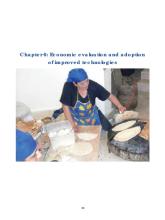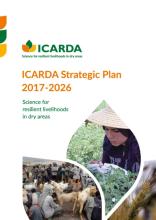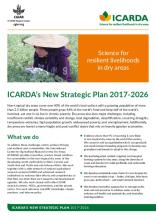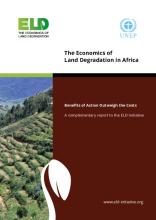/ library resources
Showing items 1 through 9 of 12.ICARDA continued to play a critical role in the development, improvement, and dissemination of climate-resilient crop varieties last year.
Widespread heat waves, floods, and droughts last year were a strong reminder of the threats posed by climate change. In the non-tropical dry areas where ICARDA works we are becoming accustomed to record high temperatures and increasing water scarcity year on year.
In this study, an economic evaluation of water-use efficiency technologies proposed and tested by the agronomic team in the Tadla Irrigated Perimeter was carried out. To capture climatic variability, the analysis was conducted during two contrasting years (dry and wet).
Few regions present bigger development challenges than the African drylands – home to nearly 300 million people, and the vast majority of Africa’s poor. Food security and rural welfare in these areas are limited by a range of factors, biophysical, socio-economic and policy-related.
This document presents the Strategic Plan of the International Center for Agricultural Research in the Dry Areas for the period from 2017 to 2026.
Non-tropical dry areas cover over 40% of the world’s land surface with a growing population of more than 2.5 billion people. These people grow 44% of the world’s food and keep half of the world’s livestock, yet one in six live in chronic poverty.
ICARDA has long-standing outreach programs in North Africa, the Nile Valley, and the Red Sea region (Fig 2). In its current strategic plan, the Center will extend its work to the drylands of Sub-Saharan Africa.
SLM CoP Presentation given by Tatenda Lemann at the SKIM Regional Workshop in Rabat, Morocco November 14th, 2019.
Land degradation and desertification are among the biggest environmental challenges of our time. In the last 40 years, we lost nearly a third of the world’s arable farmland due to erosion, just as the number of people to be fed from it almost doubled.
Paginación
Land Library Search
Through our robust search engine, you can search for any item of the over 73,000 highly curated resources in the Land Library.
If you would like to find an overview of what is possible, feel free to peruse the Search Guide.









